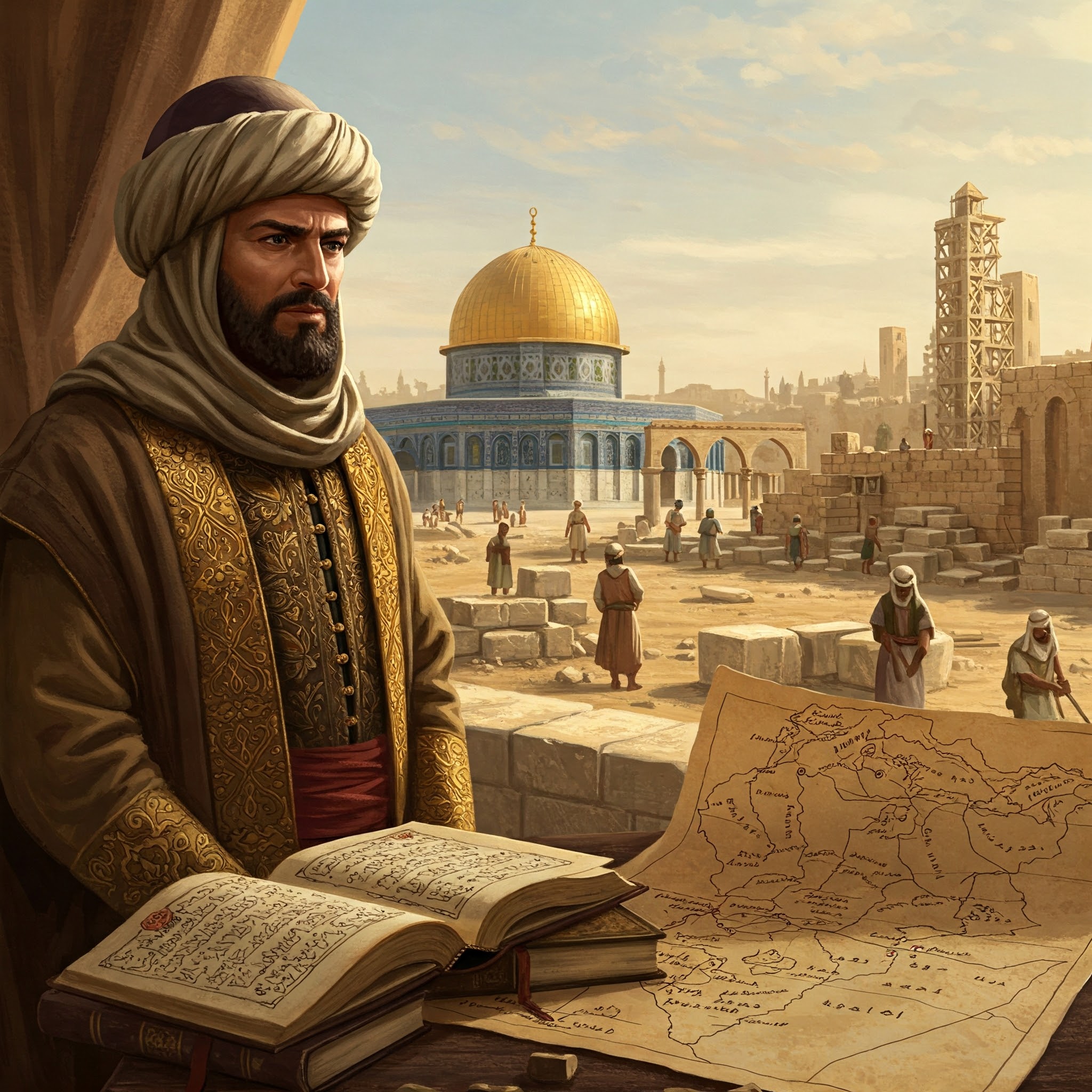An Islamic Constantine?
Table of Contents
ʿAbd al-Malik as the "Constantine of Islam"

Figure 1: Caliph Abd al-Malik ibn Marwān watches the construction of the Dome on the Rock
Fred Donner’s interpretation of ʿAbd al-Malik casts the Umayyad caliph not merely as a political stabiliser but as a theological and ideological reformer. This represents a striking departure from traditional views that focus primarily on his administrative and military achievements.
Donner argues that under ʿAbd al-Malik, the early ecumenical "Believers’ movement" was gradually transformed into a distinct, confessional Islamic identity. The terms mu’min ("Believer") and muslim ("one who submits") began to take on more exclusive meanings, tied directly to adherence to Qur'anic law. The Believers’ movement, once inclusive of righteous Jews, Christians, and other monotheists, narrowed into a more defined religious community—Islam as we recognise it today.
This reframing suggests that ʿAbd al-Malik played a role comparable to that of Constantine in early Christianity. Just as Constantine gave Christianity an imperial structure, sponsored public expressions of the faith, and helped define orthodoxy, ʿAbd al-Malik solidified Islam’s public presence through architectural projects (e.g. the Dome of the Rock), Qur’anic inscriptions on coinage, and the promotion of Arabic as the language of governance and religious expression.
In this light, ʿAbd al-Malik can be seen not just as a consolidator of empire, but as a central figure in the **formation of Islamic religious identity**—a "Constantine of Islam," whose reign marked the point where Islam became institutionally and doctrinally distinct.
This interpretation is relatively novel. Earlier scholars such as Watt and Rodinson did not give ʿAbd al-Malik this formative role. For them, Islam had already taken shape during Muhammad’s life, and later rulers were more custodians than creators. Donner challenges this view, suggesting instead that the ideology of Islam, as a distinct and exclusive confessional community, emerged under imperial pressure and the guiding hand of caliphal authority.
This perspective repositions the development of Islam within the broader Late Antique context and aligns it with similar processes in the formation of other world religions.
References
Fred M. Donner, Muhammad and the Believers: At the Origins of Islam (Harvard University Press, Belknap Press, 2010). doi.org/10.2307/j.ctvjf9w3h